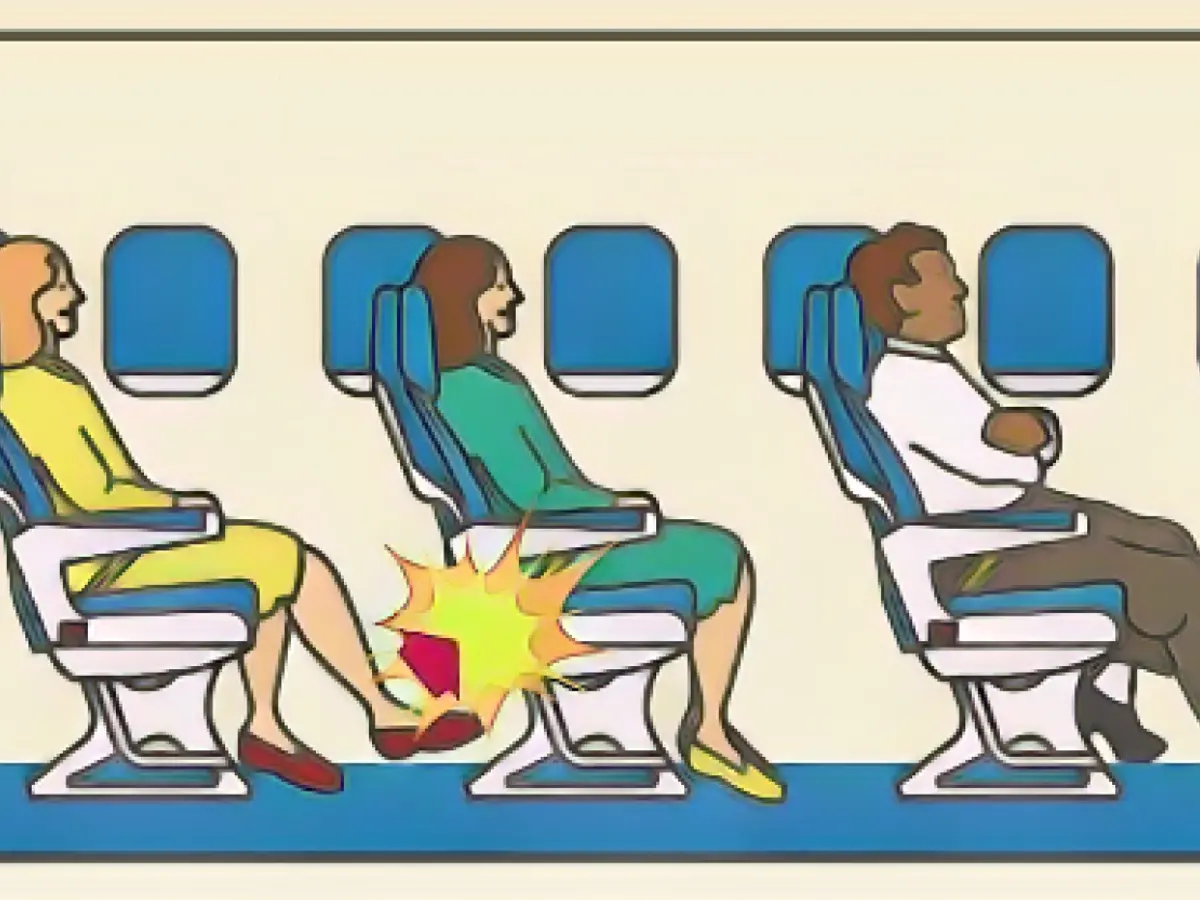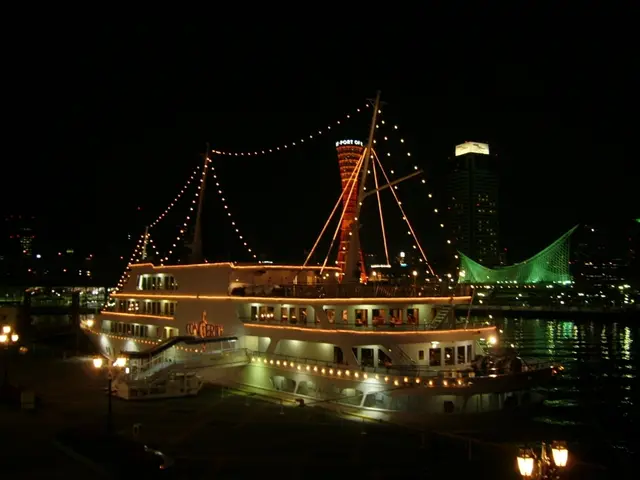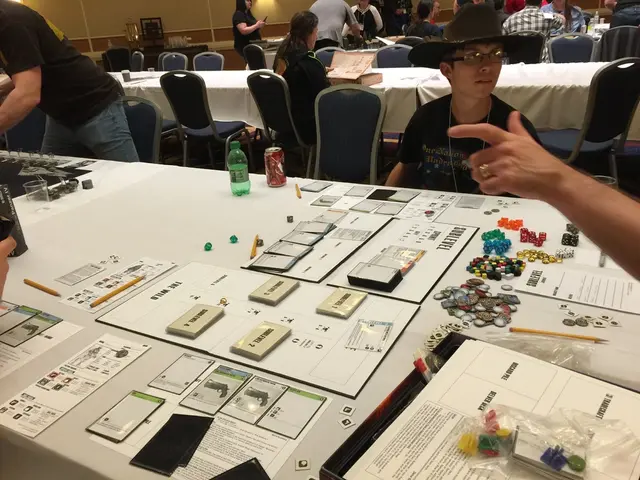Air travel is on the rise, aiming to break records this year. The Transportation Security Administration anticipates checking more passengers on the Sunday following Thanksgiving (26th November) than any other day in their 20-year history. CNN Travel discussed best practices for airplane etiquette with experts, suggesting that the experience would be smoother if passengers just applied basic courtesy during their journey.
Unfortunately, self-awareness is often lacking. People are so absorbed in their personal travel that they forget there are other passengers on the plane.
"It's always fascinating to observe. It's my bag, my carry-on, my seat, my flight, and my drink, if it comes to how people behave on a plane," says Rich Henderson, a flight attendant with 10 years of experience. "It's like being with hundreds of people."
Start with a pleasant hello
Be polite towards the crew member who greets you. "It helps a lot if the first person you see in the plane feels welcome," says etiquette expert Diane Gottsman, founder of the Texas School of Protocol. Andrew Henderson, a flight attendant with 20 years of experience, agrees. "A simple 'hello' or 'thank you' or acknowledging your presence is polite. I think part of this etiquette has been lost, given the noise-canceling headphones and devices we use today," says Andrew Henderson. "We're all so busy that..." "I forget there are people in the world," he adds. He and Rich Henderson run the website and social media account "Two Guys on a Plane," which has the motto "Rudeness is free."
A little noise reduction
In-ear headphones and noise-canceling headphones are double-edged swords. They serve well for blocking out distractions when needed, but they don't help you focus when it's important.
"As flight attendants, we usually do it for safety reasons. We joke around a lot, but honestly, it's not a joke. If there were an emergency, half the people would still be on the plane because they are using noise-canceling headphones, but they just don't do it," says Rich Henderson. "They are watching on their phones instead, and it's a little unsettling to think about."
Passengers lost in their own world also tend to miss things like those providing drink service, only to end up complaining that they were ignored.
Andrew Henderson said, "When you see a trolley or a flight attendant approaching your seat, please take off your headphones, look up, and acknowledge that you are there to prevent any awkward situations like those involving inappropriate behavior."
But headphones with noise reduction, which Gottsman describes as a "universal sign of 'I don't want to be disturbed,'" will undoubtedly prove useful in such situations. If your neighbors are talking loud, just plug in your headphones. They are your saviors when babies cry.
Keep them on and be friendly
Keep your headphones on and be friendly.
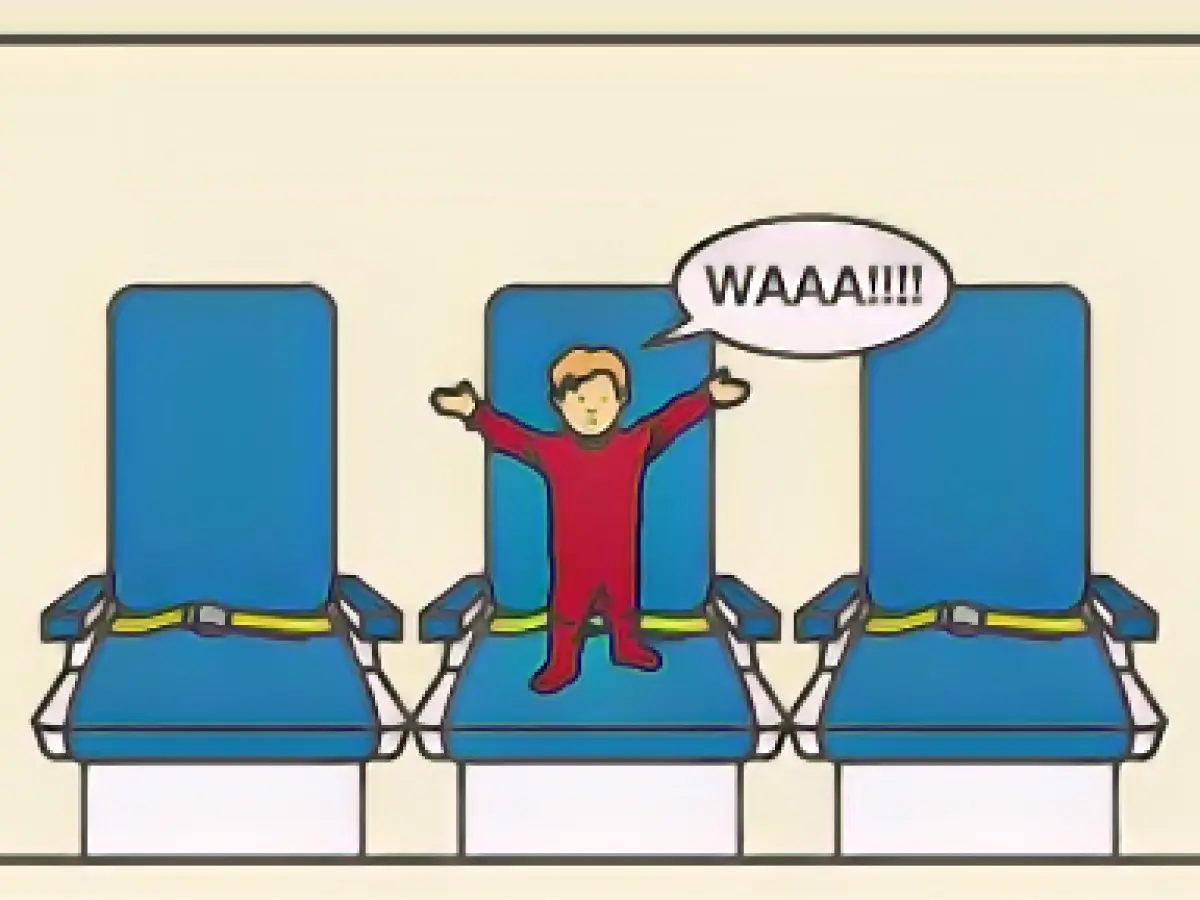
Children on a Plane
"I feel like we, as traveling parents, are owed a little understanding, as we all know...it's not the baby's fault, and it can be a real annoyance for parents when they see people rolling their eyes," says Gottsman. "But the kids going crazy is another matter. Neglectful parents are responsible for some of the most annoying behaviors on planes."
But Gottsman reminds us, "As with any public place, parents should keep an eye on their children, whether in a restaurant, grocery store, or plane, for the safety of the children and the comfort of other passengers."
Sit jumps and other conflicts
Seat conflicts are a common complaint from passengers, along with using armrests and a long list of other issues.
"We should all be friendly with each other. If someone is stepping on your seat, be an adult and turn around and speak with that person," says Andrew Henderson. "These situations require communication to avoid frustration before it arises."
If I knew I was a passenger and wanted the window shades to remain closed during the entire flight, I would talk to my neighbor and ask if they want to open them, says he. There's room for compromise if they do want to open them. Maybe they want it open during takeoff and landing to see what's going on outside, but if it's not, it's fine to close it.
Samantha Brown, TV host and travel expert, has a different take on this: "Let the person sitting by the window decide if they want the shades open." "The person at the window can open them," she explained to CNN. "The person at the aisle can't tell the person at the window to close them."
Be cautious with window seat holders
When it comes to window seats, use caution.
According to Gottsman, the middle seat gets priority twice – sort of like having a choice.
"I always say the middle person gets two armrests – so to speak," she says, adding that passengers in the middle seat should decide how they want to recline.
Samantha Brown agrees that the middle seat passenger has priority and has two armrests. "The middle seat – they get whatever they want."
Discreet solutions for seat recline issues
The recline seat issue, without a doubt, is not resolved here. Whether you want to recline or not is a contentious issue that bothers many travelers. No matter what side you lean towards, politeness is the key.
If you want to recline? "If you recline your seat, it's important to first check to see if someone's knees or bag is on the seat, check if the tray table is down or if their food is on it," says Chris Zman. "Rich Henderson believes in reclining, but there's a condition." "A person should be able to use the seat as it was designed," he says, adding that it's appropriate during mealtime. While the seat is facing forward, that's the appropriate time to use it.
Do you prefer not to recline? If you do not want your seat to be reclined, please do not force the issue. Instead, politely ask the person in front of you if you can switch seats. There may be room up front, and they may even be happy to accommodate you.
Drink a little wine
Some of the most troubling airline incidents in recent years have been related to alcohol. Passengers who have a couple of drinks at the airport bar and a few more in the air are not usually the best seatmates, as some need to face legal consequences.
"It's important to drink in moderation," says Gottsman. "Drinking is okay, but don't drink too much."
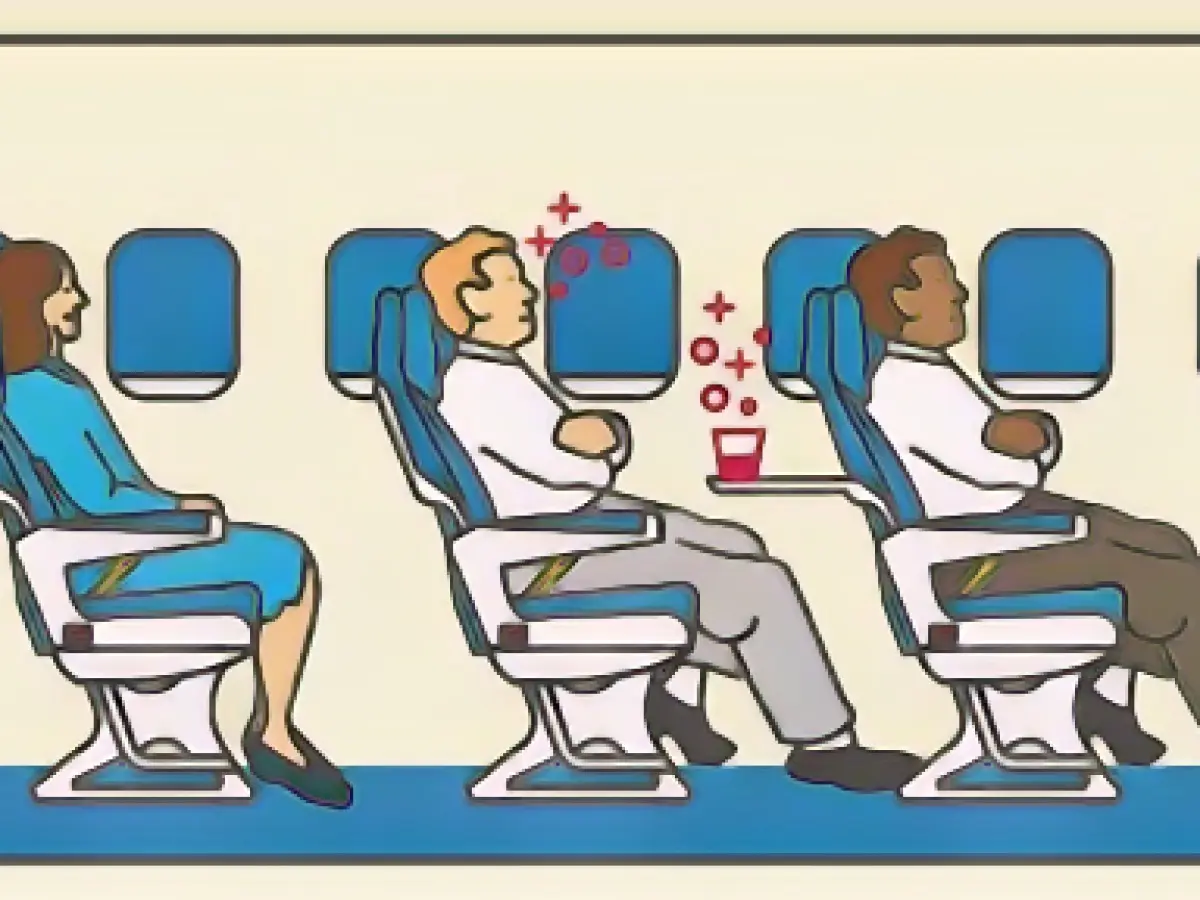
Offending odors, smelly people
Nasty smells are inevitable in small spaces. Be mindful of what you bring on board. For example, think twice about bringing fish and hard-boiled eggs.
"Food that smells bad to me also smells bad to others," explains Andrew Henderson. "But if you hear others complaining about your food, you may want to know that the airplane might not be the best place to eat fish tacos." "Or maybe it's good for you to know that you're eating fish tacos, and you should apologize to the people around you: 'I'll start eating as soon as I can.'"
Personal hygiene at home – please do not cut your nails on the way to your grandma's house. Please do pay attention to personal hygiene, but during flight, prioritize this as well.
Complaints about smells are common, and they are often caused by poor hygiene or excessive perfume or cologne use.
Smelly feet – or any feet, really
Gottsman suggests passengers to choose comfortable shoes during their flight, even if your feet swell.
"Take your shoes off and rest, but please keep your shoes on. And you shouldn't be walking barefoot or in socks in the aisle," she says. "That's not appropriate."
According to Brown, the most annoying passenger behavior she has ever experienced was someone sticking their bare feet on the handrail.
"I instantly felt that it would be appropriate to just turn around and say, 'Please don't do that,' but instead, I had to document it first."
She showed a CNN audience a photo of the culprit's bare feet – both feet – with red toenails.
End result?
"We can all do a little better, and be more considerate, especially in this stressful environment," says Rich Henderson.
Extra Content:
- "Real milestone": Baerbock travels to Rwanda for opening of Biontech plant
- Accessibility on vacation: The most important tips and best travel destinations
- The lame duck: Who is GDL boss Claus Weselsky?
- Delays and train cancellations: what rights passengers have in the event of a rail strike
The passenger goal for this year is to set an all-time record for air travel. The Transportation Security Administration predicts more passengers checked on the Sunday following Thanksgiving (26th November) than any other day in their history. If every passenger showed basic courtesy during their journey, it would all run smoothly, says an etiquette expert. Unfortunately, many lack self-awareness – they are so engrossed in their own journey that they forget there are others on the plane.
On a plane, I would scare you just as much as I am scared of what I would see. When I think about it, I see that it is my bag, my carry-on, my seat, my flight, my connection, and my drink if it comes to how people behave on a plane. It's like being surrounded by hundreds of people. You have to be aware of your environment and respect the people around you.
Source: edition.cnn.com
Enrichment Data:
Improving the flight experience for both passengers and crew members involves adhering to several etiquette tips. Here are some common ones:
- Orderly boarding:
- Follow the gate instructions and respect your boarding group. Do not try to cut the line as this can cause inconvenience to others and disrupt the boarding process.
- Respect other people’s luggage:
- Be mindful of your carry-on luggage and do not block the aisle while stowing it. If your bag does not fit, do not squash others’ belongings. If you cannot find space, ask the crew for assistance.
- Seat space and armrests:
- Do not invade others’ space with elbows, knees, or bags. If you are in the middle seat, you have a right to the armrests but do not monopolize them.
- Switching seats:
- If you want to swap seats, ask politely. If the other person says no, accept it. They are not obliged to give up their comfortable seat for your preference.
- Respect the cabin crew:
- Treat flight attendants with respect and a smile. They are professionals ensuring everyone’s safety and comfort, so mutual respect benefits everyone.
- Use the call button sparingly:
- The call button should be used for urgent needs rather than minor requests. This helps the crew manage their time more efficiently and attend to more pressing matters.
- Keep your comments to yourself:
- Avoid making unnecessary comments about turbulence or other flight conditions. This can make others anxious and uncomfortable.
- Hygiene:
- Observe proper hygiene. Avoid strong perfumes and keep your feet clean. This helps maintain a comfortable and healthy environment for all passengers.
- Be quick in the restroom:
- Be quick and leave the restroom clean. It is not your personal bathroom where you can take your time.
- Stay calm and follow instructions:
- Stay calm and follow crew instructions. Avoid blocking aisles and respect others’ space. This helps ensure a smooth and safe flight for everyone.
- Communicate politely:
- Communicate politely with your seat companion. If they do not want to engage in conversation, respect their privacy.
- Consider your seatmate’s comfort:
- Be considerate of your seatmate’s comfort. Avoid reclining your seat too far, and do not kick the seat in front of you if you need to move or stretch.
- Keep your hands and feet to yourself:
- Keep your hands and feet to yourself. Avoid manspreading and do not prop your feet up against the seat in front of you.
- Be mindful of your movements:
- Be mindful of your movements and avoid kicking the seat in front of you. Also, avoid tapping the monitor screen too hard.
- Stay hydrated and comfortable:
- Drink lots of water and wear comfortable clothing and shoes. This helps maintain your comfort and health during the flight.
By following these etiquette tips, passengers can significantly improve the flight experience for themselves and their fellow travelers while also showing respect to the crew members who ensure everyone’s safety and comfort.
